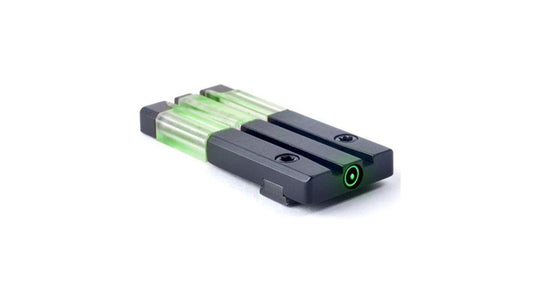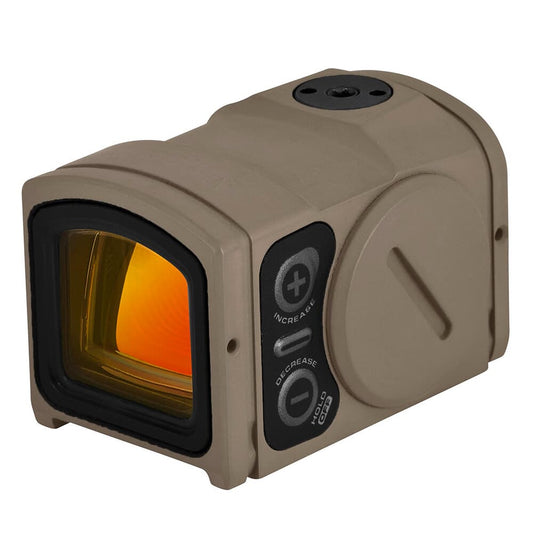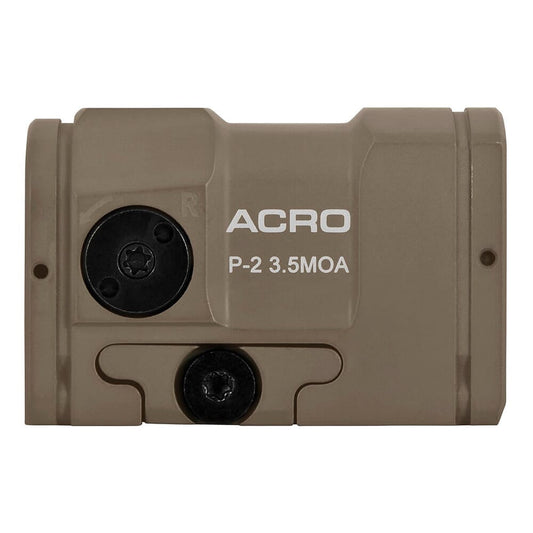

Meprolight ML63215 Fiber-Tritium Bullseye Green Front Sight for Sig Sauer P226 provides enhanced clarity and accuracy in diverse lighting conditions. This sight integrates fiber-optic technology with Tritium illumination, ensuring consistent visibility without the need for batteries. Ideal for low-light situations such as dusk hunting or tactical shooting, it enables quick target acquisition with its unique illuminated dot and circle design. This low-profile sight minimizes obstruction while improving focus, making it a practical choice for both competitions and training.
Designed for easy installation, the Meprolight ML63215 fits directly onto existing dovetails, ensuring compatibility with most holsters. Its long-lasting Tritium illumination lasts up to 12 years, making it a reliable option for nighttime use. Whether you're a competitive shooter or a tactical enthusiast, this front sight enhances your shooting experience by providing the clarity and precision needed for accurate shot alignment.
Key Features:
- ENHANCED VISIBILITY for exceptional target identification, ensuring clarity in all lighting conditions.
- NO BATTERIES REQUIRED for hassle-free operation; always ready for immediate use.
- INTUITIVE TARGET ACQUISITION allows for quick aiming, perfect for tactical scenarios and fast-paced shooting.
- LOW PROFILE DESIGN means minimal obstruction, enhancing your field of view for better focus.
- DOVETAIL MOUNTING simplifies installation; fits directly onto existing pistol dovetails with ease.
- LONG-LASTING TRITIUM guarantees illumination for up to 12 years, providing reliability during nighttime use.
- COMPATIBILITY with most holsters, ensuring seamless integration with your current gear.
- PREMIUM FIBER-OPTIC enhances daytime shooting performance, making it easy to spot targets in bright conditions.
Technical Specifications Table
| Specification | Details |
|---|---|
| Weight | 0.5 oz |
| Dimensions | 1.5 x 0.5 x 0.5 inches |
| Material | High-grade polymer & Tritium |
| Illumination | Fiber-optic and Tritium combination |
| Compatibility | Sig Sauer P226 |
| Battery | No batteries required |
What’s in the Box?
- Meprolight ML63215 Fiber-Tritium Bullseye Green Front Sight
- Installation instructions
Customer Reviews
"The clarity in low light is astounding! Made my shooting experience much more enjoyable." - Sarah H.
"Quick to install and works perfectly with my P226. Highly recommend for anyone serious about precision shooting!" - Mike T.
"I love how intuitive it is. No more fumbling, just point and shoot." - Alex R.
FAQ
How does the Meprolight ML63215 perform in low-light conditions?
The combination of Tritium and fiber-optic technology ensures that the sight remains visible regardless of the lighting, making it ideal for nighttime shooting or low-light conditions.
Is it easy to install on my Sig Sauer P226?
Yes! The Meprolight ML63215 is designed for simple installation. It fits into existing pistol dovetails, meaning you can have it mounted in no time.
How does this sight compare to traditional iron sights?
Compared to traditional iron sights, the Meprolight ML63215 offers superior visibility and faster target acquisition, particularly in varying light conditions, making it a smart upgrade.
Similar Models
Looking for more exceptional options? Explore our complete range of Meprolight products, including the Meprolight FT Bullseye sights designed for various firearms, to elevate your aiming precision and shooting confidence!
You May Also Like
Here’s some of our most similar products people are buying. Click to discover trending style.








